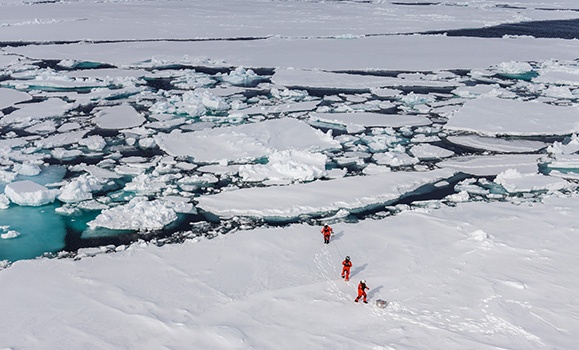Microplastics have been found in some of the most remote and pristine parts of the world, from high atop French mountains to the deep ocean and the creatures that inhabit the marine environment.
Now, the tiny bits of plastic have been discovered in a naturally occurring, gooey layer of slime beneath the Arctic ice cap that is made of algae, forms part of the carbon pump and is the driver for the ocean's food web.
Steve Allen, an Ocean Frontier Institute researcher in Dalhousie’s Department of Earth Sciences, was part of the team that found and analyzed the plastic particles in the seawater and ice algae, known as melosira arctica, from three spots off eastern Greenland.
All of their samples contained microplastics — a disturbing finding that could have big implications.
"These plastics contain and carry a lot of chemicals and those chemicals could have far-reaching effects on sea life. The impact of reduced melosira growth could be devastating to the food chain," he says of the findings, published today in Environmental Science and Technology.
"We expected there to be some plastics, but we found 10 times the amount compared to the already high numbers in the sea water."
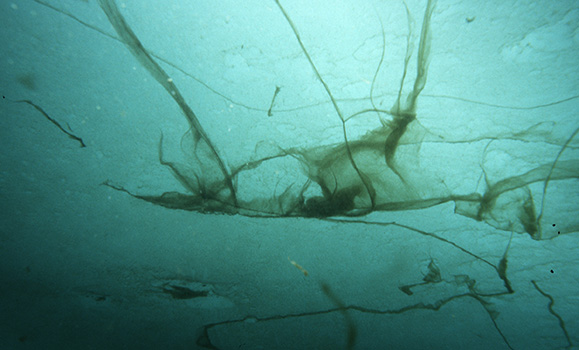
Julian Gutt photo
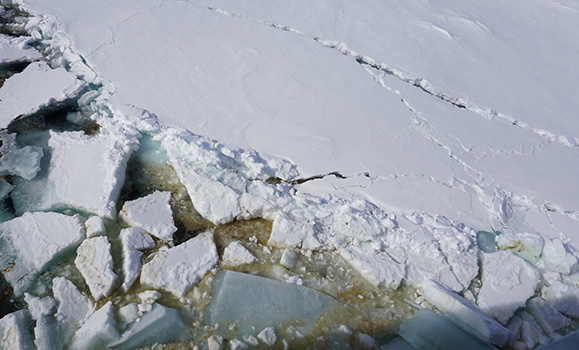
Melanie Bergmann photo
Into the marine food web
Microplastics fall to the ice or are carried there by seawater and become embedded in the slime below the ice. The algae appear to be a temporary resting site for the plastic, which drifts from the slime layer and into marine food webs at the sea surface and on the deep seafloor, allowing organisms to ingest them.
"During sea ice melting, (the algae) detaches from the sea ice and its aggregates sink rapidly to the ocean floor, feeding species such as plankton, brittle stars and sea cucumbers," the paper states.
The algae themselves are considered a keystone species to Arctic ecosystems that feed a variety of zooplankton and other marine life. The plankton then goes on to feed a large number of animals and acts as a carbon pump, capturing carbon and taking it to the sea floor as it sinks.
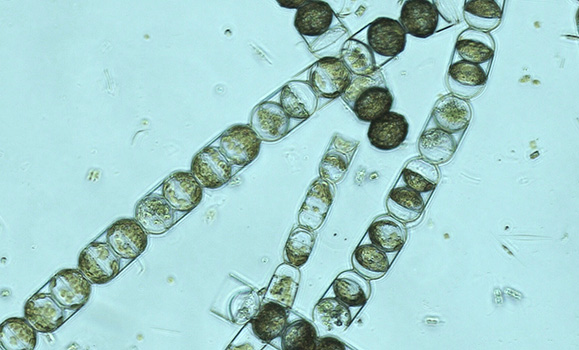
Alexandra Kraberg photo.
The team found more than 16 different types of polymers — synthetic molecules found in plastic — in the algae and identified a total of 400 particles from 12 subsamples. The Arctic sea ice contained 17 different polymer types, with polyethylene terephthalate or PET having the highest proportion of particles overall. The rest were those commonly used in paints and construction materials.
Researchers on the icebreaker RV Polarstern used a scoop on a pole to collect the samples so they did not have to get too close to the water and risk encounters with polar bears. Seawater samples were also collected by team members who were dropped onto ice floes by helicopter to scoop up the algae.
“People in the Arctic are particularly dependent on the marine food web for their protein supply, for example through hunting or fishing. This means that they are also exposed to the microplastics and chemicals contained in it,” says co-author Melanie Bergmann of the Alfred Wegener Institute.
Dr. Allen says the team will head to the same location this summer to collect more algae to see if this is a continuing trend.
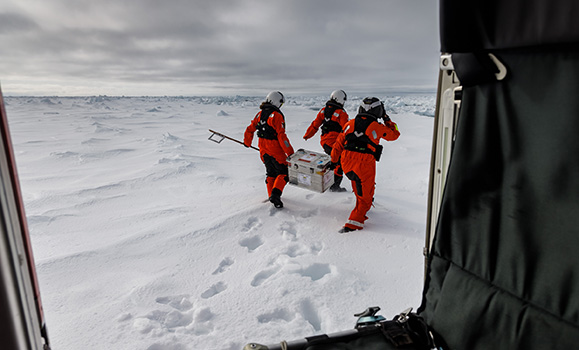
Mario Hoppmann photo
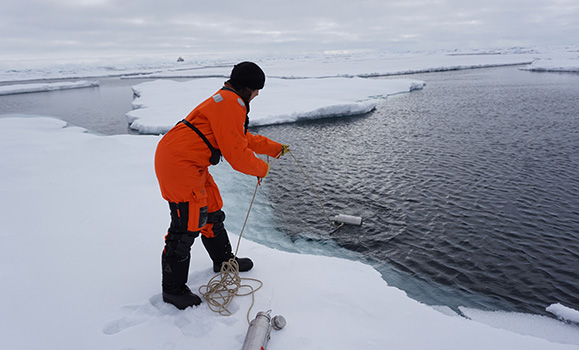
Deonie Allen photo
Part of a growing problem
Scientists have estimated there are at least 170 trillion pieces of plastic in the world's oceans, a scourge that is growing by around 10 million tonnes per year. Much of that is comprised of single-use plastics, like bottles and packaging, that break down into smaller pieces. A range of species, including birds, whales and fish, eat the plastic thinking it is food and can starve as plastic fills them up.
International negotiators are in the process of trying to come up with a UN plastics treaty by 2024 that would regulate all aspects of the life of plastic, including the kinds of chemicals that go into it and whether it’s easily recyclable. Dr. Allen is part of the scientific advisory group assisting with the negotiations.
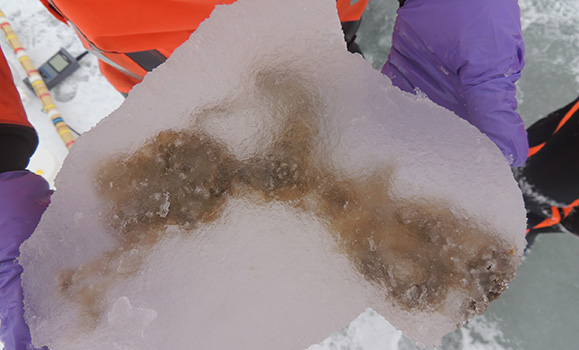 Anique Stecher photo
Anique Stecher photo
Comments
comments powered by Disqus

